Royal Navy sailors remove three TONS of rubbish from a remote Antarctic island (while the local Chinstrap Penguins watch!)
Royal Navy sailors have done their part to keep Antarctica safe and clean by removing rubbish from a remote island.
As locals, a group of chinstrap penguins, watched, the crew of the icebreaker HMS Protector removed three tonnes of rubbish.
The crew returned to Brabant Island for the first time since 2017 to continue work on removing waste left behind by an expedition in the 1980s.
Some items had previously been frozen by ice, but seven years of freeze-thaw cycles meant they could now be removed.
Lieutenant Commander Hannah Lee, who also took part in the 2017 effort, said: “It was worth it for the ship’s company to conduct a cleanup and preserve Antarctica’s natural beauty.”
Royal Navy sailors from HMS Protector have done their bit to keep Antarctica clean by removing three tonnes of rubbish from a remote island
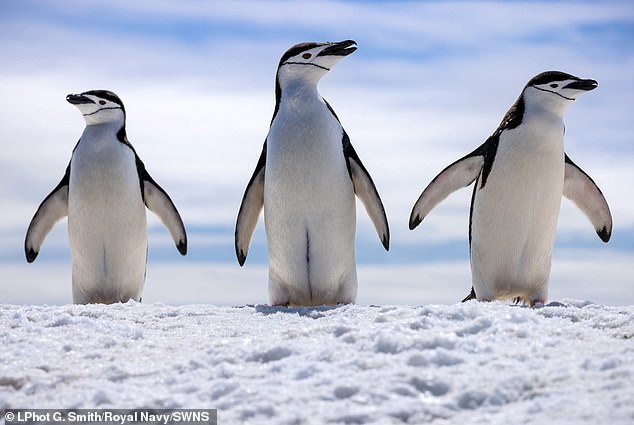
The island’s residents, a group of chinstrap penguins (pictured), watched as the sailors worked to clear away rubbish left behind by a previous expedition
While HMS Protector waited nearby, 29 members of the expedition went ashore in Zodiac boats to remove as much rubbish as possible.
Brabant Island is an uninhabited island in northwestern Antarctica that was the site of a Joint Forces scientific mission between 1983 and 1985.
However, these expeditions left behind large amounts of waste, much of which became frozen in the ice.
In 2017, HMS Protector traveled to the remote island to begin cleaning up the mess.
The team removed everything from ropes and scaffolding to jars of Sudocrem and a spice rack.
But the thirty years since the site was abandoned meant that much of the remaining waste was frozen into the ground and could no longer be excavated.
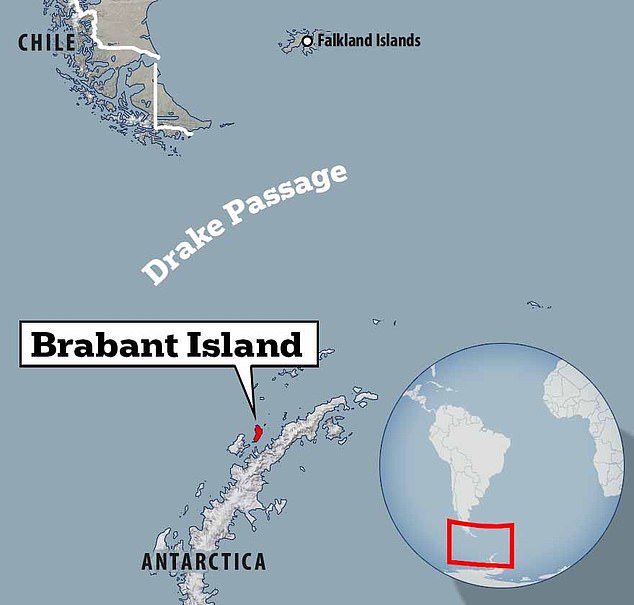
Brabant Island is an extremely remote island in the northwest of Antarctica. Since its discovery in 1898, it has only been briefly visited six times
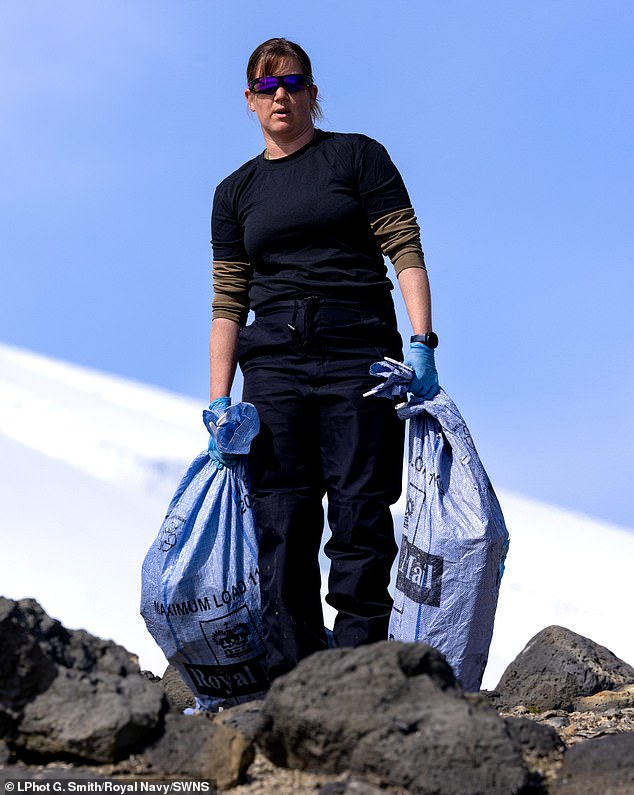
Royal Navy sailors visited the island to clean up the rubbish left behind by a scientific expedition that spent fifteen months on the island in the 1980s.
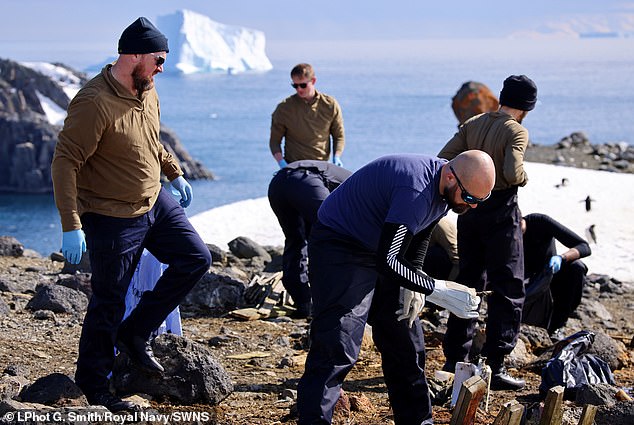
The Navy had previously tried to remove waste from the island in 2017, but so much was stuck in the ice that they had to return seven years later
This latest effort comes as part of the Navy’s ‘One Tonne Challenge’.
This challenge, issued by First Sea Lord Admiral Sir Ben Key, asks naval personnel to volunteer their time to remove one tonne of rubbish from a beach; a goal that tripled the crew of HMS Protector.
Lieutenant Commander Lee said: ‘I was part of the team that carried out the initial clean-up in 2016/2017 and it was interesting to see how much the snow had melted and how much more equipment had been uncovered.’
She added: ‘Unfortunately we have not been able to get everything off the island due to the permafrost and severity of the landscape. However, we have made it as safe as possible for the wildlife that lives there.”
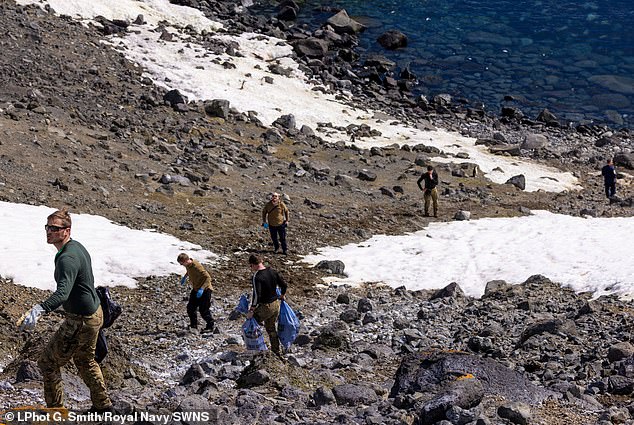
The cleanup is part of the Navy’s ‘One Tonne Challenge’, which asks Navy personnel to volunteer their time to remove a tonne of waste from beaches around the world.
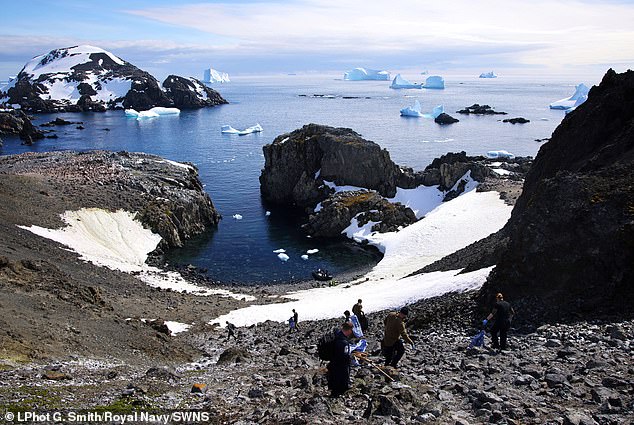
Lieutenant Commander Hannah Lee, who took part in the cleanup, says they have not yet managed to remove all the rubbish on the island as much of it is still frozen into the ground.
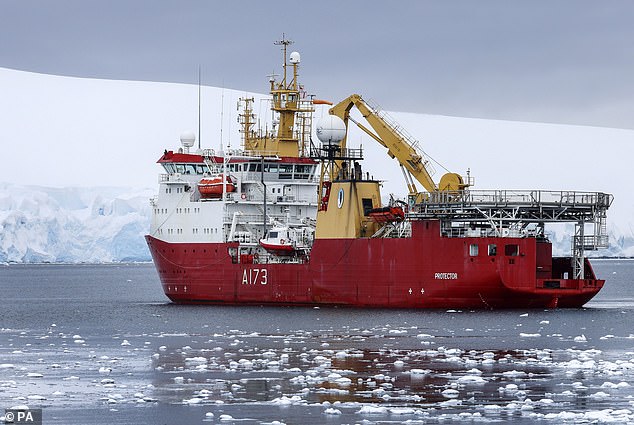
HMS Protector (pictured) is the Royal Navy’s polar research ship and is currently deployed to the Antarctic region to promote British interests and enforce the Antarctic Treaty
Since the discovery, Brabants Island has only been visited very briefly six times.
The only full-time residents are the penguin and seal populations that make the island their home.
It is estimated that more than 20,000 seals live on the island, of which elephant seals are the most numerous.
The curious chinstrap penguins, named for their distinctive head markings, also live in large numbers on the island.
However, these adorable animals can be grateful to have some peace and quiet again, as research has shown that they fall asleep up to 1,000 times a day and need 11 hours of rest.
This comes amid growing concerns about increasing pollution in Antarctica.
Research into Antarctic seawater has shown that microplastics are now as bad as anywhere on Earth.
There are also concerns about the need to clean up the waste left behind by research bases and settlements in Antarctica.
Marine Garrett, who took part in the clean-up of Brabants Eiland, says: ‘It was quite shocking to initially see all the rubbish left behind.
“But once we got together to collect all the trash, we immediately saw the benefits of our work, which was a pretty bittersweet feeling.”
